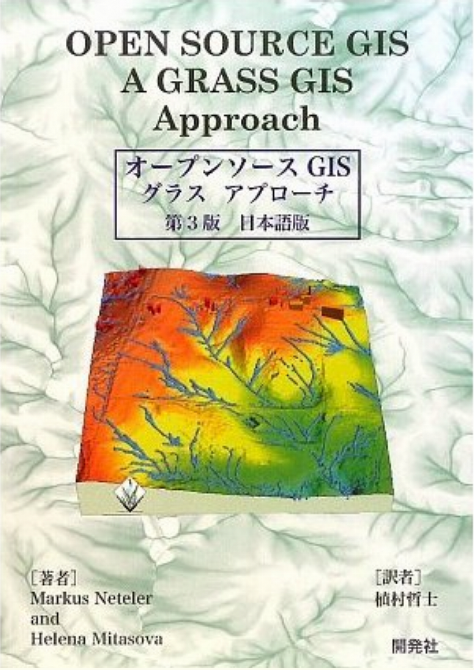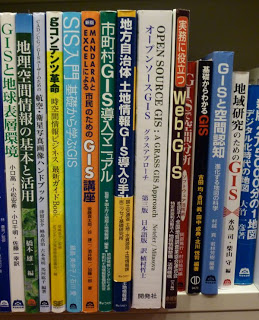


A first release candidate of GRASS 6.4.1 is now available.
Source code:
https://grass.osgeo.org/grass64/source/
https://grass.osgeo.org/grass64/source/grass-6.4.1RC1.tar.gz
Windows Binaries:
https://grass.osgeo.org/grass64/binary/mswindows/native/WinGRASS-6.4.1RC1-1-Setup.exe
More binaries will become available shortly.
To get the RC1 source code from SVN:
svn checkout https://svn.osgeo.org/grass/grass/tags/release_20110103_grass_6_4_1RC1
An announcement has been drafted at
https://trac.osgeo.org/grass/wiki/Release/6.4.1RC1-News
All RC news will be merged into the final announcement later.
Since the 6.4.0 release in September 2010 almost 390 source code
modifications have been made to the 6.4.x release branch. Key
improvements of the GRASS 6.4.1 release include enhanced
portability for MS-Windows (native support), fixes for the new
wxPython based portable graphical interface, and new functionality.
Release candidate management at
https://trac.osgeo.org/grass/wiki/Grass6Planning
Please join us in testing this release candidate for the final release.
Thanks to all contributors!
The QGIS Development Team is very pleased to announce the release of QGIS 1.6.0, the next in their development release series.
Binary and source code packages are available at:
The release announcement and changelog is available here:
https://blog.qgis.org/node/146
Along with the release of QGIS 1.6.0, the QGIS Community Team is hard at work on an updated QGIS Users’ Guide version 1.6. The guide will be available in the near future – they will post announcements when it is available.
QGIS is a completely volunteer driven project, and is the work of a dedicated team of developers, documenters and supporters. The team extends their thanks and gratitude to the many, many hours which people have contributed to make this release happen.
If you would like to make a donation or sponsor the project, please visit https://www.qgis.org/en/
IPA (IT promotion agency Japan), a government agency, has announced that the OSGeo Japan Chapter will be awarded “Japanese Open Source Software Encouragement Award†on 28th October 2010.
IPA (IT promotion agency Japan) has earlier funded the internationalization of GRASS GIS and Mapserver and it is just that they have been fast it recognizing the good work done by OSGeo and the Japan Local Chapter.
The Japan chapter was established in late 2006 and the local community has been growing steadily and dedicating effort to promoting FOSS4G.
Press release by IPA (in Japanese)
https://www.ipa.go.jp/about/press/20101015_2.html
About the award
IPA grants “Japanese OSS Contributor Award†to a developer who has established and has been managing the development project which has the nfluence, to a superior developer who takes an active role in the global projects and to a contributor to spread the Open Source Software. Also IPA grants “Japanese Open Source Software Encouragement Award†to the individual or the group which has a remarkable activity to develop and/or spread OSS.
The latest OSGeo Journal has been published:
| OSGeo Journal Volume 6 – All Articles | |
| 59 pages |
Table of Contents
| From the Editor… | |
| Tyler Mitchell | 1 |
| Volunteer Recognition (Volume 6) | |
| Landon Blake | 2 |
| News  | |
| Scott Mitchell | 4 |
| CASCADOSS International Symposium and International Information Workshop. Events’ report. | |
| Rafal Wawer, Monika Rusztecka, Erika Orlitowa, Adam Podolcsak, Therese Steenberghen, Therese Steenberghen | 7 |
| Summer Training Courses on FOSS4G 2007-2009Â | |
| Rafal Wawer, Jos Van Orshoven, Jos Van Orshoven | 4 |
| Why Every Open Source Software Project Needs A Good Dictator | |
| Landon Blake | 2 |
| GPGPU with GDAL – Basics of GPGPU interfacing | |
| Yann Chemin | 3 |
| gvSIG is a viable robust alternative to commercially available GIS packages | |
| Simon Christopher Cropper | 3 |
| GRASS Image Processing Environment. Application to evapotranspiration Direct Readout | |
| Yann Chemin, Thomas Alexandridis, Ines Cherif | 5 |
| SEXTANTE, a free platform for geospatial analysis | |
| Victor Olaya | 8 |
| Usability Trumps Features: User needs and the redesign of a web-based GIS to support community environmental monitoring | |
| Martin Joseph Bunch, Micheal David MacLennon |
Prof. Helena Mitasova was honored with the Sol Katz Award for Geospatial Free and Open Source Software 2010 during the closing plenary of the FOSS4G 2010 conference in Barcelona, Spain. Helena has contributed a variety of methods, algorithms, documentation and tutorials amongst other efforts to the FOSS4G community. Her outstanding contributions date back to 1990 when she started to develop new analytical modules for GRASS GIS. Since then she served on many committees within OSGeo, she is coauthor of the first Open Source GIS book; she published over 50 scientific and academic publications linked to FOSS4G and contributed a rich OSGeo GIS dataset to the community which has become a standard for software testing and teaching. Helena’s video acceptance is available here.
Background
The Sol Katz Award for Geospatial Free and Open Source Software is awarded annually by OSGeo to individuals who have demonstrated leadership in the GFOSS community. Recipients of the award will have contributed significantly through their activities to advance open source ideals in the geospatial realm. The hope is that the award will both acknowledge the work of community members, and pay tribute to one of its founders, for years to come.
Sol Katz was an early pioneer of GFOSS and left behind a large body of work in the form of applications, format specifications, and utilities. In the early 80’s, Sol assisted in the development of a public domain GIS package called MOSS (Map Overlay and Statistical System). This software was arguably the first open source GIS software in the world. Sol would later go on to release and maintain PC MOSS. He was also one of the first involved in public data translator utilities. Utilities that he developed for converting DEMs and reading SDTS files were contributed back to the geospatial community, and are still available today. Sol was also a frequent contributor to many geospatial list servers, providing much guidance to the geospatial community at large. Sol Katz’s collection of GIS utilities at the BLM is still available at ftp://ftp.blm.gov/pub/gis/. Sadly, after fighting Non-Hodgkin’s Lymphoma for almost a decade, Sol died April 23, 1999 in bed. His legacy will always live on in the GFOSS world.
See also: https://www.osgeo.org/community/awards/
| We are pleased to announce the release of GRASS GIS 6.4.0, the first in the new line of 6.4 stable releases. As a stable release 6.4 will enjoy long-term support. The next release (6.4.1) will introduce a few new features which are still undergoing final testing, but after that all further 6.4 releases will be bugfix-only. Due to our highly conservative stabilization policy this is the first official version of GRASS to introduce new features since October 2006 and supersedes the previous stable line of GRASS 6.2. As such the floodgates are open and there are many new features to explore and many new structural improvements to be found in the software. GRASS 6.4 brings a number of exciting enhancements to the GIS. Our new wxPython graphical user interface (wxGUI) is debuted, Python is now a fully supported scripting language, and for the first time since its inception with a port from the VAX 11/780 in 1983, GRASS will now run natively on a non-UNIX based platform: MS-Windows! In addition to bringing the software to a host of new users, the ability to run GRASS on any common computer platform furthers our goal of open access to the software. We hope you will enjoy the ability to use this program on the systems that are most convenient to you and your work. Due to the freshness of WinGrass there may still be a few rough edges yet to discover, but after more than a year of dedicated testing and quality-assurance review we are very pleased with the results. Users can be confident to use this version for their day to day work, indeed due to the open development model many already do. Existing UNIX and Mac users will be happy to know that these new features do not disrupt the base GIS which remains as solid as ever and fully backwards compatible with earlier GRASS 6.0 and 6.2 releases. The venerable Tcl/Tk GUIs are also still available if you prefer to use them. The GRASS software including over 400 built-in analysis modules and 100 community supplied add-on modules and toolboxes can be downloaded for free from the main GRASS website at https://grass.osgeo.org, or from many local mirrors worldwide. In addition to the extensive documentation which comes with the software, our Wiki help system contains a wealth of user supplied tips and tricks, tutorials, and guides. Since 6.4 entered the testing phase work has begun on GRASS 7 and is progressing rapidly, including many new wxGUI improvements and tools which we hope to bring over for the upcoming 6.4.1 release. About GRASS GISThe Geographic Resources Analysis Support System, commonly referred to as GRASS, is a Geographic Information System (GIS) providing powerful raster, vector, and geospatial processing engines in a single integrated software suite. GRASS includes tools for spatial modeling, visualization of raster and vector data, management and analysis of geospatial data, and the processing of satellite and aerial imagery. It also provides the capability to produce sophisticated presentation graphics and hardcopy maps. GRASS has now been translated into twenty languages and supports a huge array of data formats. GRASS is a founding member of The Open Source Geospatial Foundation (OSGeo), a non-profit legal entity which has enjoyed extraordinary growth. We expect that this formal infrastructure will guarantee that the GRASS community will be well supported and vibrant far into the future. Screenshots
Platforms supported by GRASSGNU/Linux, Mac OS X/Darwin, Microsoft Windows (native using MinGW or with full UNIX support via Cygwin), Sun Solaris (SPARC/Intel), Silicon Graphics Irix, HP-UX, DEC-Alpha, AIX, the BSD family, iPAQ/Linux and other UNIX compliant platforms. GRASS runs on both 32 and 64 bit systems with large data file (>2GB) support for most key modules. Software download/CDROMThe new source code is available now and binary packages for major operating systems will be published shortly. What’s new in GRASS 6.4.0(selected improvements from the nearly 9,000 updates to the source code)
A more detailed description of changes can be found in the previous announcements of the GRASS 6.3 development preview release and the GRASS 6.4.0 release candidate series. We are always looking for testers, code developers, and technical writers to help us maintain and accelerate the development cycle. The GRASS GIS project is developed under the terms of the GNU General Public License (the GPL) in the open by volunteers the world over. GRASS differs from many other GIS software packages used in the professional world in that it is developed and distributed by users for users, mostly on a volunteer basis, in the open, and is given away for free. Emphasis is placed on interoperability and unlimited access to data as well as on software flexibility and evolution rate.
GRASS Development Team |
Nicolas Bozon and Gérald Fenoy have just announced the ZOO Kernel 1.0 release (MIT/X-11 style license). This release offers the ZOO API (also under MIT) and some sample ZOO services.
From the Web site at https://www.zoo-project.org/
Download of the ZOO Source code:
https://zoo-project.org/trac/wiki/Download
https://zoo-project.org/trac/browser/trunk
Some basic ZOO Documentation is already available on ZOO Kernel installation and ZOO services deployment on the website. Growing detailed documentation is available at:
https://zoo-project.org/trac/wiki/ZooDocumentation
ZOO also has a Twitter now!
https://twitter.com/ZOO_Project
Recently, OSGeo.jp has presented the Japanese translation of the 3rd edition of the GRASS GIS book. It was a pleasant evening in Tokyo with lots of people attending (“Present and Future of GRASS user community in Japan“).
Before reaching the place, we checked in a nearby book store if the book was available: Indeed – found in the book shelf!
 |
 |
 |
A great effort of Tetsuji Uemura to translate 400 pages… the new book is not expensive at all, around 35 Euro. So, please buy it :)
FOSS4G 2010 Press Release #4
We are pleased to announce the Call for Abstract for the FOSS4G (Free and Open Source Software for Geospatial) 2010 conference, being held September 6-9, in beautiful Barcelona, Spain.
Held annually, FOSS4G is the premier conference for the open source geospatial community, providing a full-immersion experience in established and leading edge geospatial technologies for developers, users, and people new to open source geospatial.
FOSS4G 2010 presentations are 25 minute talks, with 5 minute question and answer sessions at the end. Presentations cover the use or development of open source geospatial software. Anyone can can submit a presentation proposal and take part in the conference as a presenter.
Some topics of interest for this year are:
If you have an open source geospatial story to tell, we want to hear it!
For more information, see the FOSS4G site:
https://2010.foss4g.org/
The deadline for abstract submissions is April 1, 2010. Submit early, submit often!
The FOSS4G 2010 academic track aims to bringing together researchers, developers, users and practitioners carrying out research and development in the geospatial and the free and open source fields and willing to share original and recent research developments and experiences.
The academic track will act as an inventory of current research topics, but the major goal is to promote cooperative research between OSGeo developers and the academia. The academic track is the right forum to highlight the most important research challenges and trends in the domain, and let them became the basis for an informal OSGeo research agenda. It will foster interdisciplinary discussions in all aspects of the geospatial and free and open source domains. It will be organized in a way to promote networking between the participants, to initiate and favour discussions regarding cutting-edge technologies in the field, to exchange research ideas and to promote international collaboration.
All submissions to the academic track must be original unpublished work written in English. Papers should not exceed the 6000 words limit. Formatting guidelines will be available soon. Submitted papers will be thoroughly reviewed by three members of the international scientific committee and refereed for their quality, originality and relevance.
Open Source Consultancy
E-Mail: markus AT neteler DOT org | contact form
